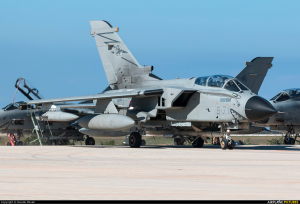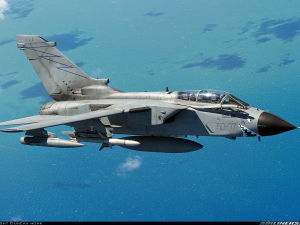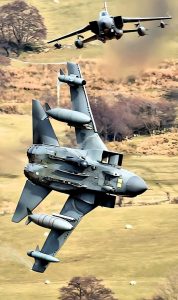The Italian Tornado, a versatile and formidable aircraft, stands as a testament to Italy’s aeronautical prowess and its role in the international defense landscape. Developed jointly by Italy, the United Kingdom, and West Germany, the Tornado has become a symbol of European collaboration in the realm of military aviation.

Design and Performance: The Italian Tornado, officially known as the Panavia Tornado, is a twin-engine, variable-sweep wing multirole combat aircraft. Its design incorporates advanced features to ensure optimal performance in a variety of mission profiles. The variable-sweep wings allow the Tornado to adapt to different flight regimes, enhancing agility and efficiency.
Powered by two Turbo-Union RB199 turbofan engines, the Tornado is capable of reaching speeds exceeding Mach 2. Its impressive speed and low-level flying capabilities make it well-suited for both air-to-air and air-to-ground missions. The aircraft’s terrain-following radar system further enhances its ability to operate at low altitudes, evading enemy radar detection.

Versatility in Mission Roles: One of the key strengths of the Italian Tornado lies in its versatility. Originally designed for low-level penetration of enemy airspace, the Tornado has undergone various upgrades to excel in multiple mission roles. Its capabilities span air superiority, ground-attack, electronic warfare, and reconnaissance.
The Tornado’s sophisticated avionics suite includes radar systems, infrared sensors, and advanced navigation equipment. This allows it to operate effectively in all weather conditions, providing the Italian Air Force with a reliable and adaptable platform for various mission requirements.

International Service: The Italian Tornado has not only served as a cornerstone of the Italian Air Force but has also been widely adopted by other NATO countries. Its combat-proven track record was demonstrated during various conflicts, including the Gulf War and more recent military operations.
Retirement and Successor: Despite its storied history and enduring service, the Italian Tornado is gradually being phased out of active duty. The Italian Air Force has been transitioning to more modern and technologically advanced aircraft, such as the Eurofighter Typhoon, to meet the evolving demands of contemporary aerial warfare.

Conclusion: The Italian Tornado remains an iconic and respected aircraft in the annals of military aviation. Its legacy is marked by decades of reliable service, successful collaborations, and a commitment to adapting to the changing nature of warfare. As it gradually makes way for newer platforms, the Italian Tornado will always be remembered as a symbol of Italy’s aerospace excellence and its contribution to the defense capabilities of NATO and beyond.





